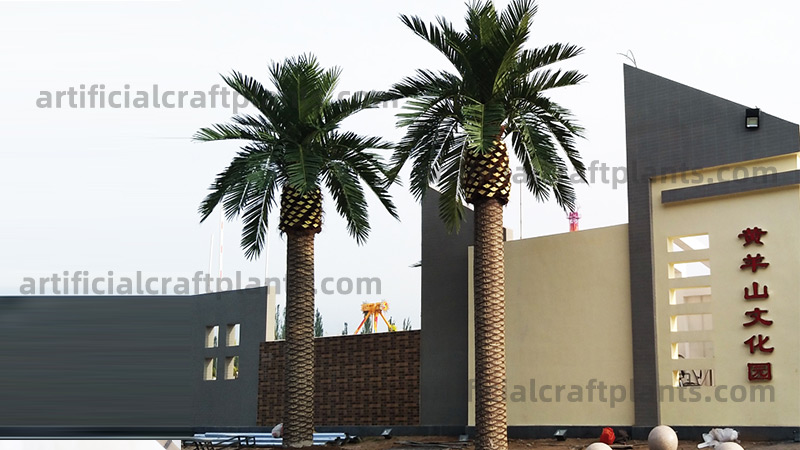Faded artificial plants are a common frustration for businesses. Imagine investing in a bulk order, only to see the vibrant greens turn dull or yellow within months. This issue affects not just aesthetics but also customer trust and long-term profitability.
How can B2B buyers ensure their artificial plants resist fading and maintain their color for years?
The solution lies in material selection, UV protection, and stringent quality control measures. This guide provides essential tips to help businesses source fade-resistant artificial plants Nearly Natural: Outdoor UV Resistant Faux Trees and Plantsand avoid costly discoloration pitfalls.
Why Do Artificial Plants Fade Over Time?
Unlike natural plants, artificial ones don’t regenerate lost pigment. Once they fade, replacement is the only option. Understanding why fading occurs helps businesses make informed purchasing decisions.
Key Causes of Artificial Plant Discoloration
- UV Exposure – Sunlight is the primary culprit behind color fading. Prolonged UV exposure breaks down dyes and pigments.
- Low-Quality Dyes – Inferior coloring agents degrade faster, especially under direct sunlight.
- Material Breakdown – Some plastics and fabrics are more prone to degradation, leading to a washed-out appearance.
- Chemical Reactions – Exposure to air pollutants, chlorine, or certain cleaning agents can cause discoloration.
The Business Risks of Poor Color Retention
- Frequent Replacements – Faster fading means higher costs for replacements and maintenance.
- Customer Dissatisfaction – A plant that loses its color too quickly leads to negative reviews and returns.
- Inconsistent Inventory – If different batches fade at different rates, product consistency suffers.
So, how do you prevent these issues? The answer lies in smart sourcing and strict quality assurance.
How to Ensure Fade-Resistant Artificial Plants
1. Choose High-Quality Materials
Different materials have different resistance to fading. Here’s what you need to know:
| Material Type | UV Resistance | Durability | Best for |
|---|---|---|---|
| PU (Polyurethane) | High | Flexible, soft texture | Indoor & outdoor use |
| PE (Polyethylene) | Excellent | Tough, weather-resistant | Outdoor landscaping |
| Silk Fabric | Low (unless treated) | Delicate, natural look | Indoor decor |
| PVC (Polyvinyl Chloride) | Moderate | Cost-effective | Indoor & shaded areas |
- Pro Tip: For outdoor use, always opt for PE or UV-treated PU to maximize longevity Designer Plants: Why Use Artificial Plants for Hotels?1.
2. Look for UV-Resistant Technology
Plants exposed to sunlight need built-in UV protection.Ask suppliers about:
- UV inhibitors in raw materials – Ensures color protection at a molecular level.
- UV spray coatings – Provides an extra layer of defense against sunlight.
- Weather-resistant testing – Proven resistance against prolonged exposure.
3. Request Fading Test Certifications
A reliable supplier should provide lab test reports showing color retention over time. Key tests include:
-
Xenon Arc Testing – Simulates years of UV exposure in a short time.
-
Salt Spray Testing – Checks resistance to environmental pollutants.
-
Temperature & Humidity Resistance – Evaluates performance in extreme climates.
-
Ask your supplier: "Do you have UV resistance certification for your products?"
4. Understand the Manufacturing Process
Quality control starts in production. Key checkpoints include:
- Pigment Stability Testing – Ensures dyes used in manufacturing won’t fade prematurely.
- Consistent Batch Coloring – Prevents noticeable color shifts between orders.
- Final Quality Checks – Verifying fade resistance before shipment.
5. Educate End-Users on Proper Maintenance
Even fade-resistant artificial plants need care. Advise clients to:
- Place indoor plants away from direct sunlight to prolong vibrancy.
- Use mild cleaners instead of harsh chemicals that might accelerate fading.
- Rotate plants in outdoor spaces to ensure even exposure to sunlight.
Common Myths About Artificial Plant Fading
"All artificial plants fade eventually, so there’s no point in worrying about UV protection."True
Not true! High-quality UV-resistant plants can last years without noticeable fading.
"Adding a UV spray to any artificial plant will prevent fading."False
While UV sprays help, they are not as effective as built-in UV inhibitors used in the manufacturing process.
"Silk plants fade faster than plastic ones."False
Only partially true. While untreated silk fades quickly, UV-treated silk can be surprisingly durable indoors.
Conclusion
Avoiding artificial plant discoloration starts with smart sourcing. By choosing fade-resistant materials, demanding UV certifications, and working with high-quality manufacturers, B2B buyers can ensure their products remain vibrant for years. Don’t let fading ruin your investment—opt for quality and durability from the start!
-
Explanation: Highlights the durability of PE and PU materials in artificial plants, reinforcing material selection advice. ↩

Hello everyone, I'm Li!By day, I'm a seasoned expert in the artificial plant industry, starting from the factory floor and working my way up to running my own successful business. In my free time, I’m passionate about running and often join trail runs with friends.Here to share what I've learned—let's grow together!



